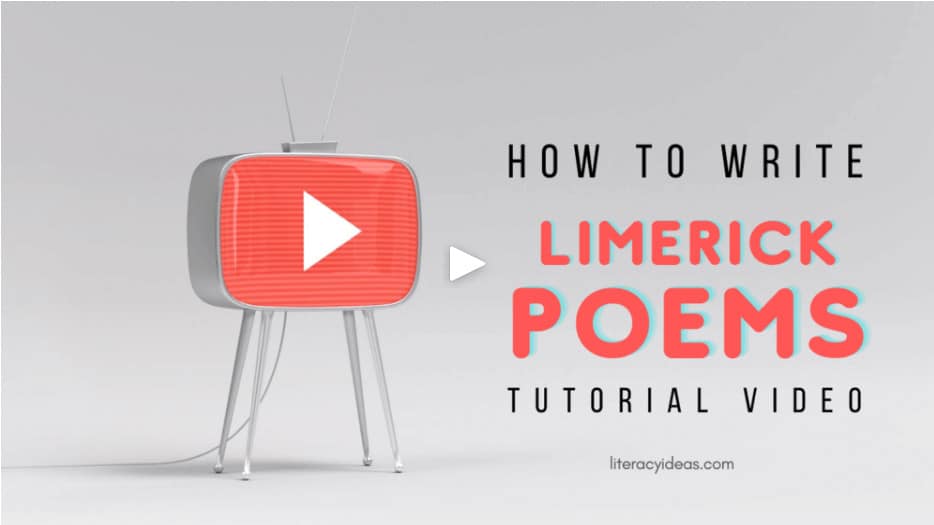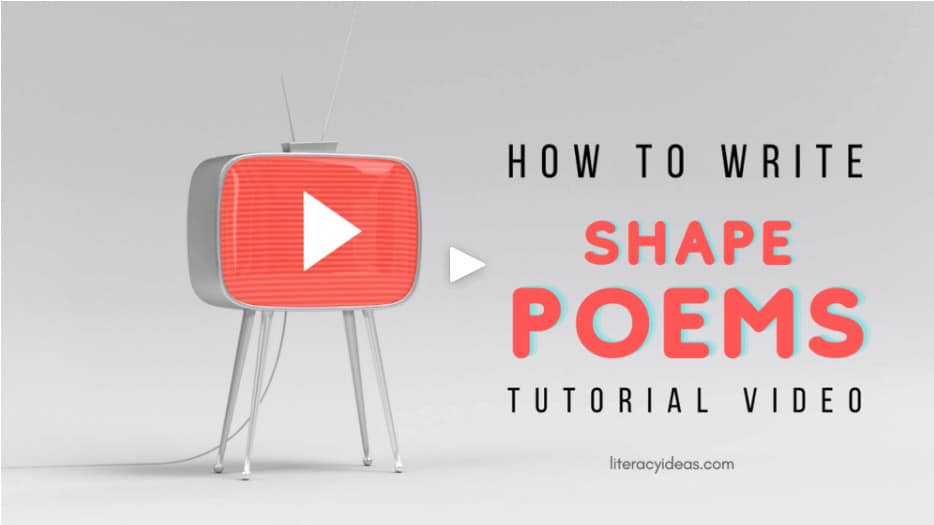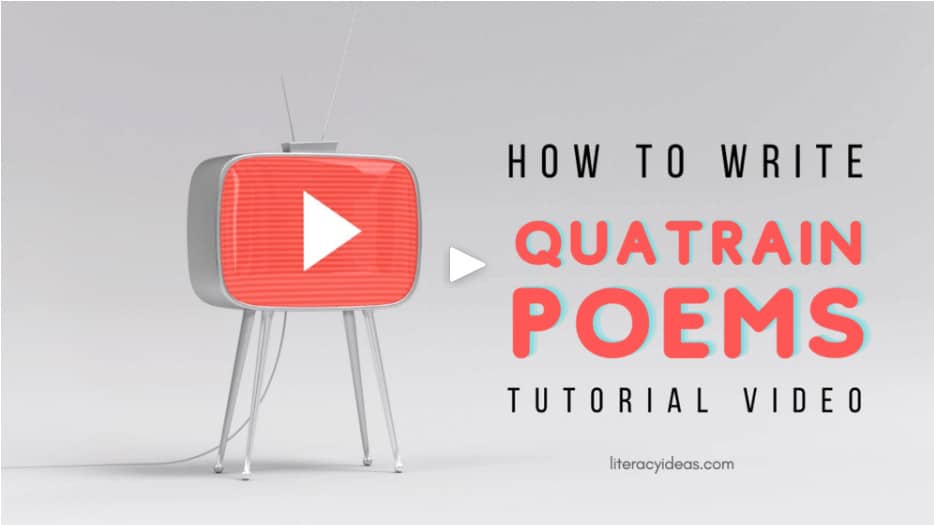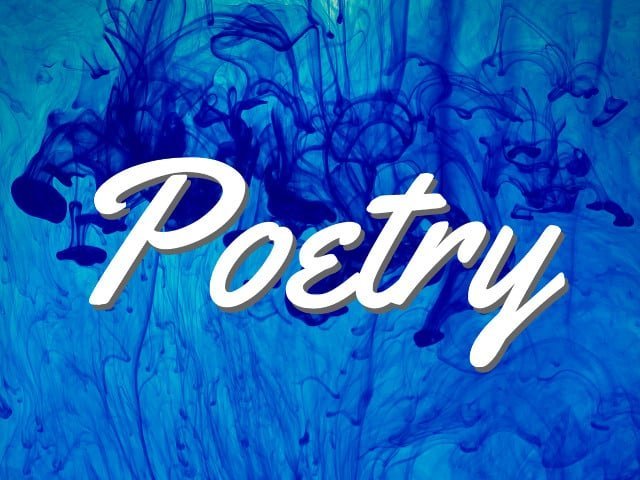

Poetry is a broad area of literature that offers teachers and students the opportunity to dip their toes or completely dive into creative writing. Learning how to write poetry is a fun and engaging process that will positively affect language use across all other writing styles.
With over fifty acknowledged styles of poetry, plenty is on offer to students of all ages and abilities. We will look at seven different styles of poetry and strategies for teaching it in the classroom. These styles of poetry are most commonly taught in elementary/primary classrooms.
To learn how to write poetry even more effectively, we also have a complete guide to the elements of poetry that may be useful.
Poetry Key Terms
- Cadence – The patterning of rhythm in natural speech or poetry without a distinct meter.
- Meter – The rhythmical pattern of stressed and unstressed syllables in verse.
- Refrain – A phrase or line repeated at intervals within a poem, especially at the end of a stanza.
- Rhyme – The repetition of syllables, typically at the end of a verse line. Rhymed words conventionally share all sounds following the word’s last stressed syllable.
- Stanza – a group of lines forming the basic recurring metrical unit in a poem; a verse
- Tone – The poet’s attitude toward the poem’s speaker, reader, and subject matter, as interpreted by the reader.
- writing arranged with a metrical rhythm, typically having a rhyme
- Verse – writing arranged with a metrical rhythm, typically having a rhyme
POETRY WRITING TIPS FOR TEACHERS

Above all else, writing poetry must be fun in its infancy. Be sure to get some quick wins with acrostic and shape poetry before exploring more complex poetry such as sonnets and palindromes.
Limericks are a great starting point for rhyming poetry as they require only a moderate vocabulary for students.
Be sure to share your poetry with students. Have fun with the fact they may have used crazy rhyming words that didn’t make a great deal of sense in the poem’s context. As long as they understand the rhyming sound pattern, such as AA BB A found in a limerick, it is of far greater importance than if the limerick makes sense. They are supposed to be nonsensical.
My final tip on teaching how to write poetry is to mix it up. An hour of limericks can get tired quickly. Maybe throw some shape poetry to mix it up and bounce between the two areas.
RHYMING POEMS and free verse poetry in the classroom

When the concept of poetry is introduced to students, their first thoughts are usually around beautiful rhyming language that is catchy, emotional, friendly to the ear and easy to remember.
Whilst rhyming poetry should be part of your poetry teaching toolkit; students must understand RHYME SCHEMES beforehand.
A rhyme scheme dictates the tempo and flow and accentuates the key points of poetry. It achieves this by reinforcing sounds and key terms through repetition.
For all our examples outlined below, you will see we have used letters to illustrate the rhyming pattern. For example, AA BB A
- Each letter represents a single line of poetry.
- When the letters vary, it determines a change in rhyming pattern at any point, which could be an internal rhyme or end rhyme.
- When the final word in a line of poetry rhymes with the last word in another line, this is called an end rhyme. Many common poetry forms use end rhymes.
- When words in the middle of a line of poetry rhyme with each other, this is called an internal rhyme and is less common.
If rhyming poetry seems like a bridge too far for some of your students, ensure you have a free verse or other non-rhyming poetry options such as Haiku and acrostic forms demonstrated below to keep them engaged.
Seven simple poetry styles your students will love
Acrostic Poetry
Acrostic poetry is considered one of the simpler forms of poetry and is commonly taught to younger students. Acrostic poems are generally quick and easy to write and open students’ minds to the understanding that poetry is a non-conventional style of writing which doesn’t always have to make perfect sense.
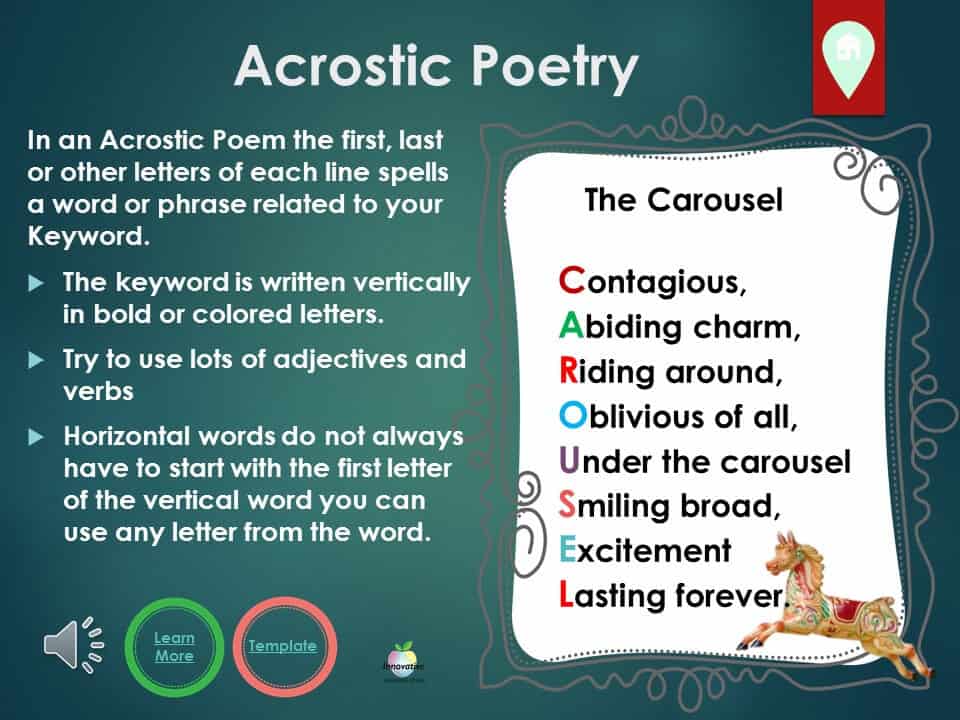
Listen to an Acrostic Poem Example
Top Tips for writing an Acrostic Poem
- Write your word or words down vertically when planning
- Brainstorm words or phrases that describe your idea.
- Place your brainstormed words or phrases on the lines that begin with the same letters.
- Fill in the rest of the lines to create a poem.
- Horizontal words do not always have to start with the first letter of the vertical word you can use any letter from the word.
Epitaph
In its original form, an epitaph is the defining words written on a tombstone that future generations will know us by. The limited space and complexity of chiselling a stone tablet did not allow for complexity, so short, sweet and direct to the point was the order of the day.
Today actual epitaphs are rarely seen and, in a poetic sense, have become an opportunity to have a bit of fun reflecting on the misfortune or good humor of others.
Epitaphs are very easy for younger writers to pick up due to the simplicity of the rhyming pattern, length and above all else, they are fun to write.
If you are looking for a starting point for rhyming poetry, Epitaph are a great option.

Listen to an Epitaph Example
TOP TIPS FOR WRITING A GREAT EPITAPH
Epitaphs are an ancient form of writing that remains popular today. As long as we honor our dead, epitaphs will always be an essential way to celebrate their lives.
When teaching students how to write poetry remember the following tips:
- Epitaphs are short and concise, don’t overcomplicate them.
- They emphasize strong feelings.
- Often, someone speaks in the first person (a relative, a friend, the deceased.)
- The writer should think about their audience. When and where will they see it?
The Clerihew
The Clerihew is a very similar style of poetry to the epitaph. It uses the exact same rhyming pattern and length as an epitaph but is more of a mock piece targeted at famous people.
Both the Epitaph and Clerihew style of poetry can be introduced in the same session to reinforce rhyming poetry and writing for a specific purpose and audience.
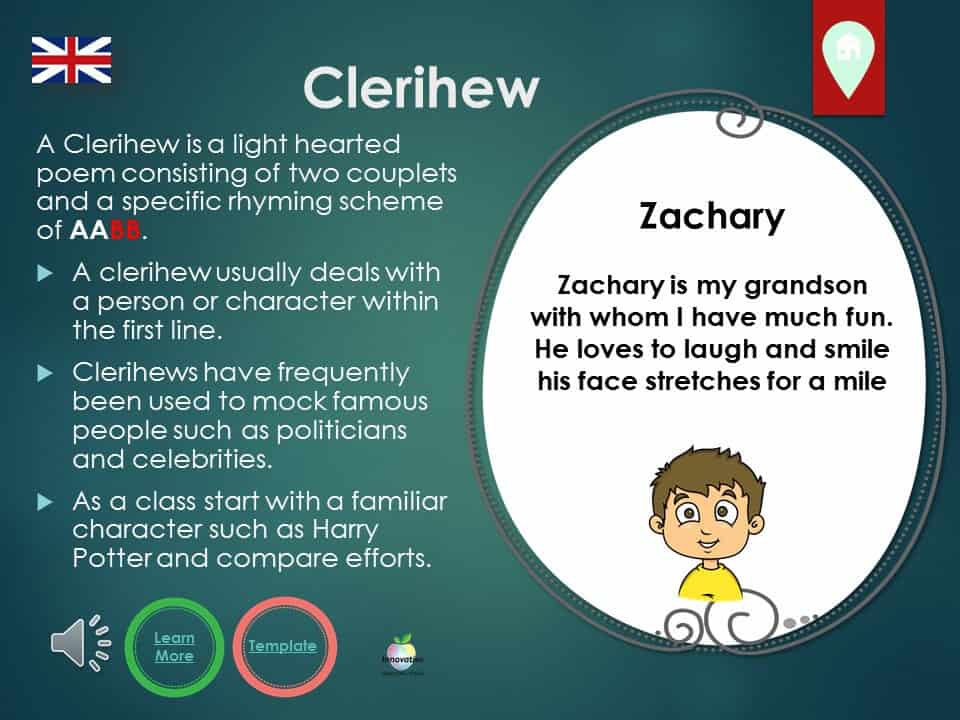
Listen to a Clerihew Example
TIPS FOR WRITING A GREAT CLERIHEW
A Clerihew is supposed to be funny first and foremost, so keep in that spirit when writing one.
Clerihews have just a few simple rules to follow:
- They are only four lines long.
- The first and second lines rhyme with each other, and the third and fourth lines rhyme with each other.
- The first line names a person, and the second line ends with something that rhymes with the person’s name.
Irish Limerick
A limerick is another fun type of poetry continuing concepts learnt from epitaphs’ which steps it up slightly in complexity due to a different rhyming pattern and increased length.
When teaching students how to write poetry emphasize the concept of fun and humor which is the essence of writing a limerick in the classroom. They will both love writing and reading these aloud for this reason.
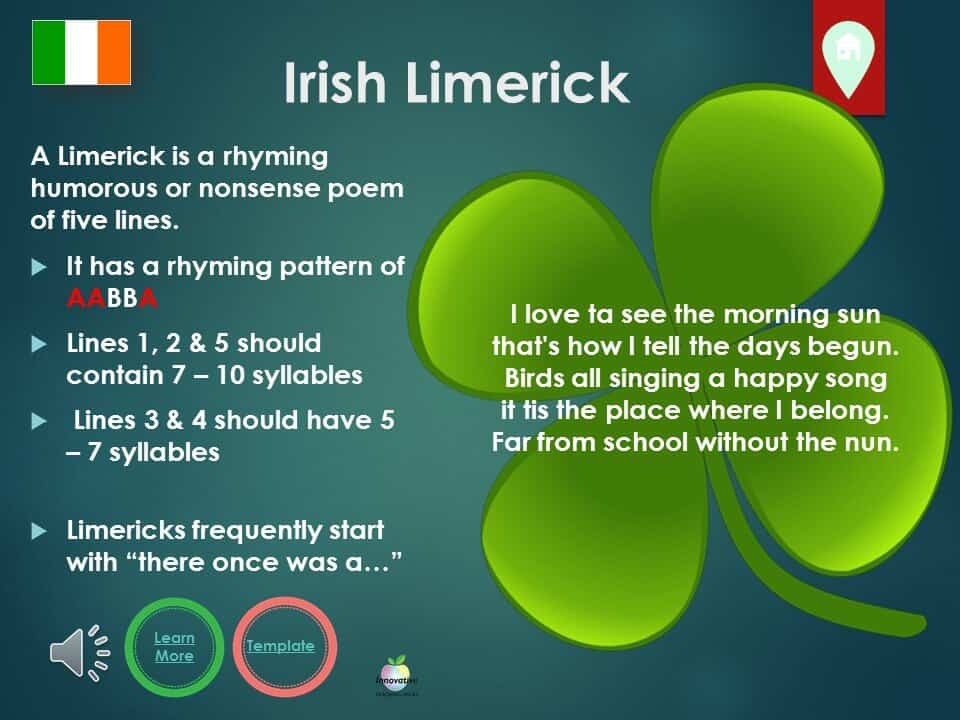
Listen to a Limerick Example
TIPS FOR WRITING A GREAT LIMERICK
Being only five lines long, limerick poems have an AABBA rhyme scheme, which means the first, second, and last lines rhyme while the third and fourth lines rhyme. Pretty straightforward, really.
There are two common elements you will notice when you read limericks:
The first line usually ends with a person’s first name or the name of a place.
The last line is usually funny.
Shape or Concrete Poetry
These styles of poetry rely on a solid relationship between visuals and words. There is no preferred style or guidelines for shape and concrete poetry so long as the audience can clearly connect the words and visuals.
You will know if you have succeeded at these forms of poetry if it is clearly understood without a title and is an easy win when teaching students how to write poetry.
Refer to the images below for further clarification.

Shape Poetry in action
TIPS FOR GREAT SHAPE POETRY
- Start by writing out your whole poem without putting it into a shape, and then add then let the words make up the shape later.
- There are no rules when it comes to a concrete poem, so you’re free to let your imagination run wild.
- Don’t stress about the length of your poem, but remember that the more words you have, the bigger your shape will be.
Quatrains
A Quatrain is an ancient french style of poetry with one hard rule. It must be no more or less than four lines in length.
Most quatrains rhyme following one of the patterns as demonstrated below.

Listen to a Quatrain Example
TIPS FOR WRITING A GREAT QUATRAIN
Quatrain poetry is constructed by four lines that alternate in rhyme. So, the first and third lines have a word rhyming with each other at the end, as do the second and fourth lines. The quatrain poem can also be written with two different rhythms, either A,B,A,B or as A,A,B,B.
The quatrain would not be your first introduction to poetry. Ensure your students understand rhyming poetry by trying some of the other styles above.
The Palindrome
A palindrome is a phrase that can be read forwards and backwards with the same outcome. “A man, a plan, a canal — Panama” is a commonly used example. Read it backwards for yourself…
As demonstrated below, a palindromic poem follows this concept in a structured model. The only word not repeated is found on the fourth (or centre) line. This word allows us to reverse the words we have been presented within the first half.
Palindromes are easy to write once your students clearly understand the why and what they are expected to do.
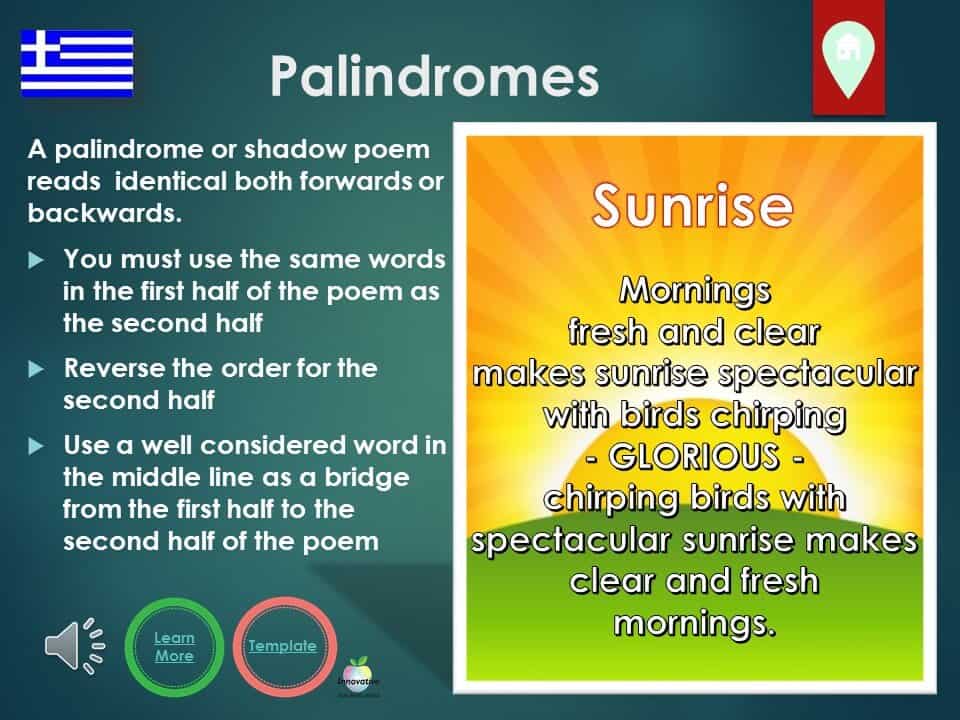
Listen to a Palindrome Example
TIPS FOR WRITING A GREAT PALINDROME
- When studying how to write poetry ry reading a few things backwards to get your mind in the palindromic head space.
- Don’t let perfect stop productivity. Try to make sense of your palindrome but don’t overcomplicate it in the strive for perfection.
- Do some research. There are plenty of famous palindromes that can be found and read on the web. Read a few of them before beginning.
Shakespearean Sonnet
A poem containing both emotion and rhyme is considered a lyric and, as such, has strong connections to drama and music. The great William Shakespeare’s preferred style of poetry was the sonnet, and he frequently included them in nearly all of his plays to convey a greater sense of emotion.
The Shakespearean Sonnet is a strict 14-line model, as demonstrated below and should be aimed at older and more accomplished writers who already have a sense of rhyming poetry and emotive language.

Listen to a Sonnet Example
TIPS FOR WRITING A SHAKESPEAREAN SONNET
- Try writing your sonnet about something you deeply love… It could be a person, but if that was a little awkward it might be easier to start with a sport, food or something else you are passionate about.
- Write your lines in iambic pentameter (duh-DUH-duh-DUH-duh-DUH-duh-DUH-duh-DUH.
- Structure your sonnet as an argument that builds as it moves from one metaphor to the next.
Free 30 Day Poetry Blitz Matrix
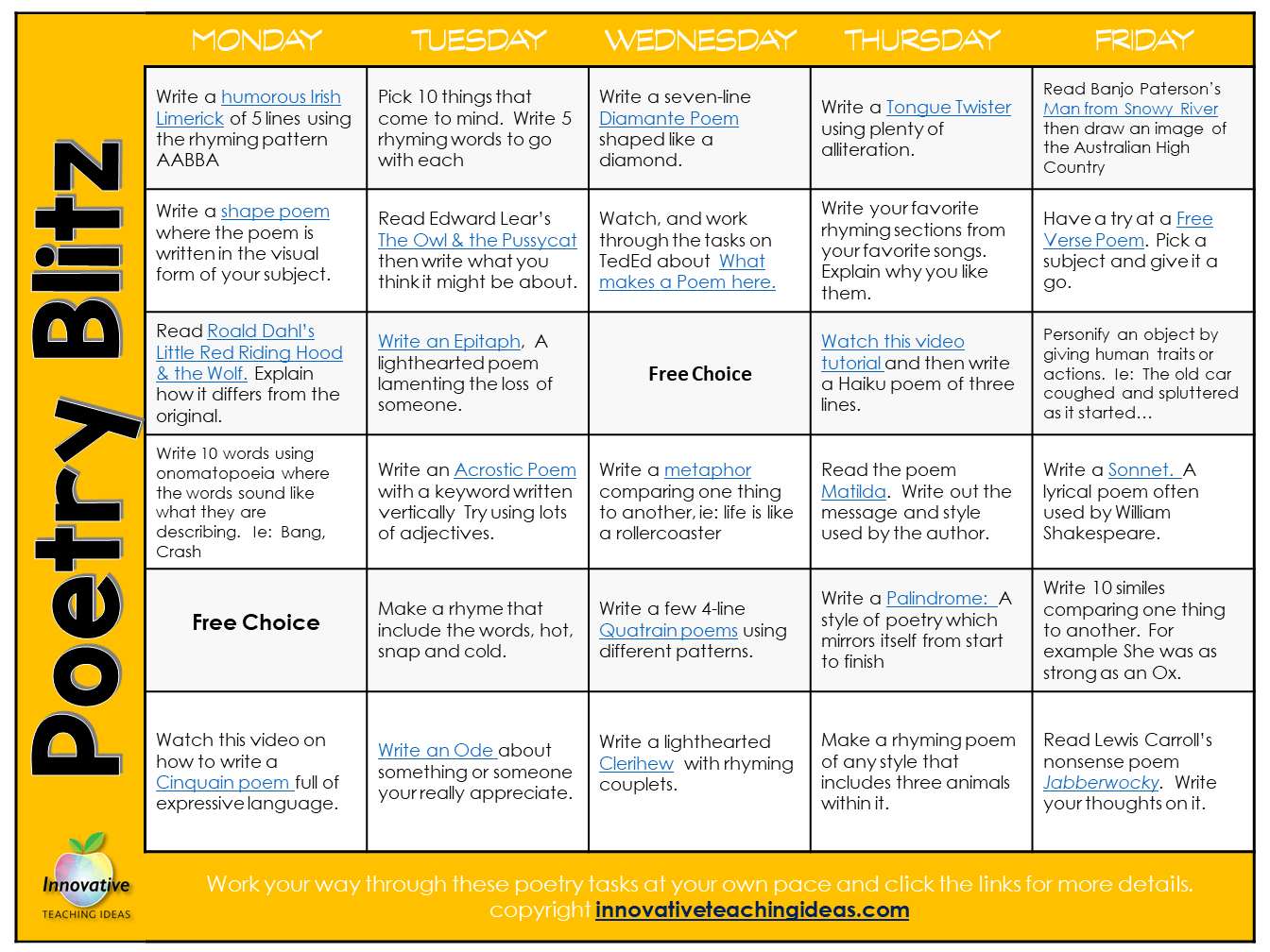
Your students will love this 30-day Poetry Matrix to challenge their understanding of and ability to write great poetry.
It works beautifully for DISTANCE LEARNING due to its instructional hyperlinks and simple guides for students to follow. Add it to GOOGLE CLASSROOM or SeeSaw to keep your students engaged on the task. DOWNLOAD NOW
A COMPLETE UNIT OF WORK ON POETRY

Poetry is one of the few styles of writing which openly encourages students to let go of their emotions and share them with others.
This is not an easy thing for students, and the process can be even more difficult if we expect them to write deep and meaningful styles of poetry, such as ballads and free verse, without developing an appreciation and understanding of poetry through fun and simple structure.
These eight styles of poetry are great entry points for teachers and students to approach poetry confidently yet still allow creativity and emotion to be part of the writing process.
Each style contains a clear structure you can teach your students by following the instructions, alongside diagrams and the highly recommended audio recordings by our resident voice actor Alan Munro. Just click the audio button for each style.
These poems come from a collection of 19 styles of poetry from Innovative Teaching Ideas, which include 115 pages of templates, rubrics and more for all major styles of poetry.
MORE GUIDES ON HOW TO WRITE POETRY






